What Is Skirting?
Skirting is also known as baseboard or skirting board. It covers the lowest part of the interior wall. The primary purpose of the skirting board is to cover the joint between the wall and the floor.

Purpose Of Skirting In A Building:
Skirting is provided for the purpose of aesthetics, hiding unwanted items in the wall, or protecting the wall from water.
Different purposes of skirting are as follows
- Protect the wall from water.
- Hide unwanted items on the wall.
- Hide space between floor and wall.
- For aesthetical purposes.
- Provide some space between the wall and furniture.
- Prevent painting surface from stain.
Types Of Skirting:
1. Wooden skirting
2. Pencil skirting
3. Metal skirting
4. Flush skirting
5. Double-layer skirting
6. Continued skirting
7. Colored skirting
I have described the above-mentioned types of skirting in brief.
1. Wooden skirting:
Wooden skirting looks beautiful and is used for the purpose of aesthetics. wooden skirting provides a rich feeling with marble or terrazzo floors. Wooden skirting is also a good option for the tiled floor.
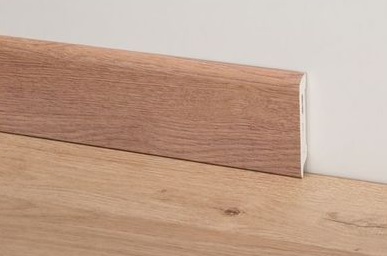
2. Pencil skirting:
Pencil skirting is used to hide the expansion gap and provide a neat and clean finish surface. Normally the upper edge of pencil skirting is round.
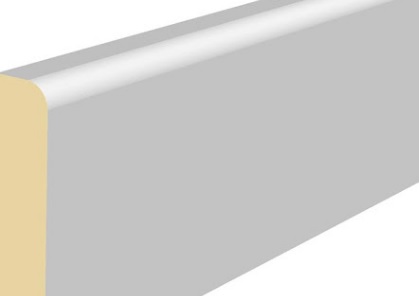
3. Metal skirting:
Normally, Stainless Steel is used for this type of skirting. Stainless steel has a shiny surface. This type of skirt is a bit difficult to install and needs skilled manpower.
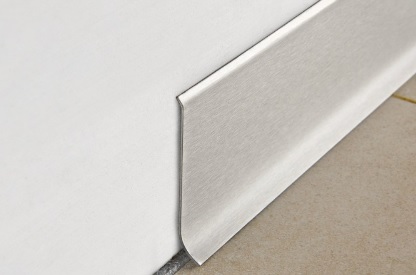
4. Flush skirting:
If you want to skirt with the same level as the plastering surface then go for flush skirting. Flush skirting provides charming looks to your room. It does not capture the dust like other tiles which are at the outer level of the wall.

5. Double Layer Skirting:
As the name suggests this type of skirting is made in two parts and joined together when installed. Double layer skirt is a very innovative idea and provides a unique design.
Both layers of this skirting can be the same level or different levels. Required skilled workers to install properly.
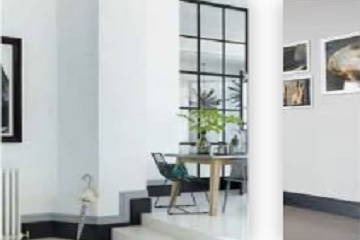
6. Continued skirting:
As the name suggests it continued even if there is any other structure adjacent to walls like a staircase or any other structure. It is a very innovative idea to make color balance within interior space.
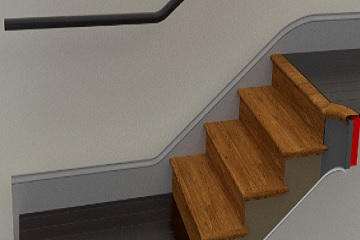
7. Colored skirting:
In this type of skirting, the skirting board is painted with the desired color. Normally, MDF ( Medium Density Fiberboard ) because it not much costly compared to HDF (High-Density Fiberboard ).

Faqs
A skirting board, also known as baseboard, is a decorative and functional trim board that runs along the bottom of an interior wall where it meets the floor.
The main purpose of skirting board is to protect the bottom of the wall from damage and wear, such as scuffs and scratches caused by furniture or foot traffic. It also provides a decorative finish to the room.
Skirting boards can be made of a variety of materials, including wood, MDF, PVC, and plaster. Each material has its own advantages and disadvantages, such as durability, ease of installation, and cost.
When choosing a skirting board, consider the style of the room and the existing décor. Choose a material and design (like stepped skirting board) that complements the room’s aesthetic, and ensure that the size and height of the skirting board are proportional to the size of the room.
Skirting board can be installed using a variety of methods, including adhesive, nails, screws, or a combination of these. It is important to ensure that the skirting board is securely attached to the wall and level with the floor.
Yes, skirting board can be painted to match the wall or trim colour. It is important to ensure that the skirting board is properly prepared for painting, including cleaning, sanding, and priming.
Skirting board can be easily maintained by wiping it down with a damp cloth and mild detergent to remove any dirt or grime. Avoid using abrasive cleaners or harsh chemicals that can damage the finish of the skirting board.
If a skirting board becomes damaged, it can be repaired using wood filler or plaster. Sand the damaged area, apply the filler or plaster, and then sand again to ensure a smooth finish. Once dry, the repaired area can be painted to match the existing skirting board.
Yes, skirting board can be replaced without damaging the wall by carefully removing the old skirting board using a pry bar or chisel. Once the old skirting board is removed, clean the wall and install the new skirting board using the same method as the original installation.
To measure skirting board, use a tape measure to determine the length of each wall in the room. Add the lengths together to determine the total length required for the skirting board. Measure the height of the wall to determine the height of the skirting board needed.
